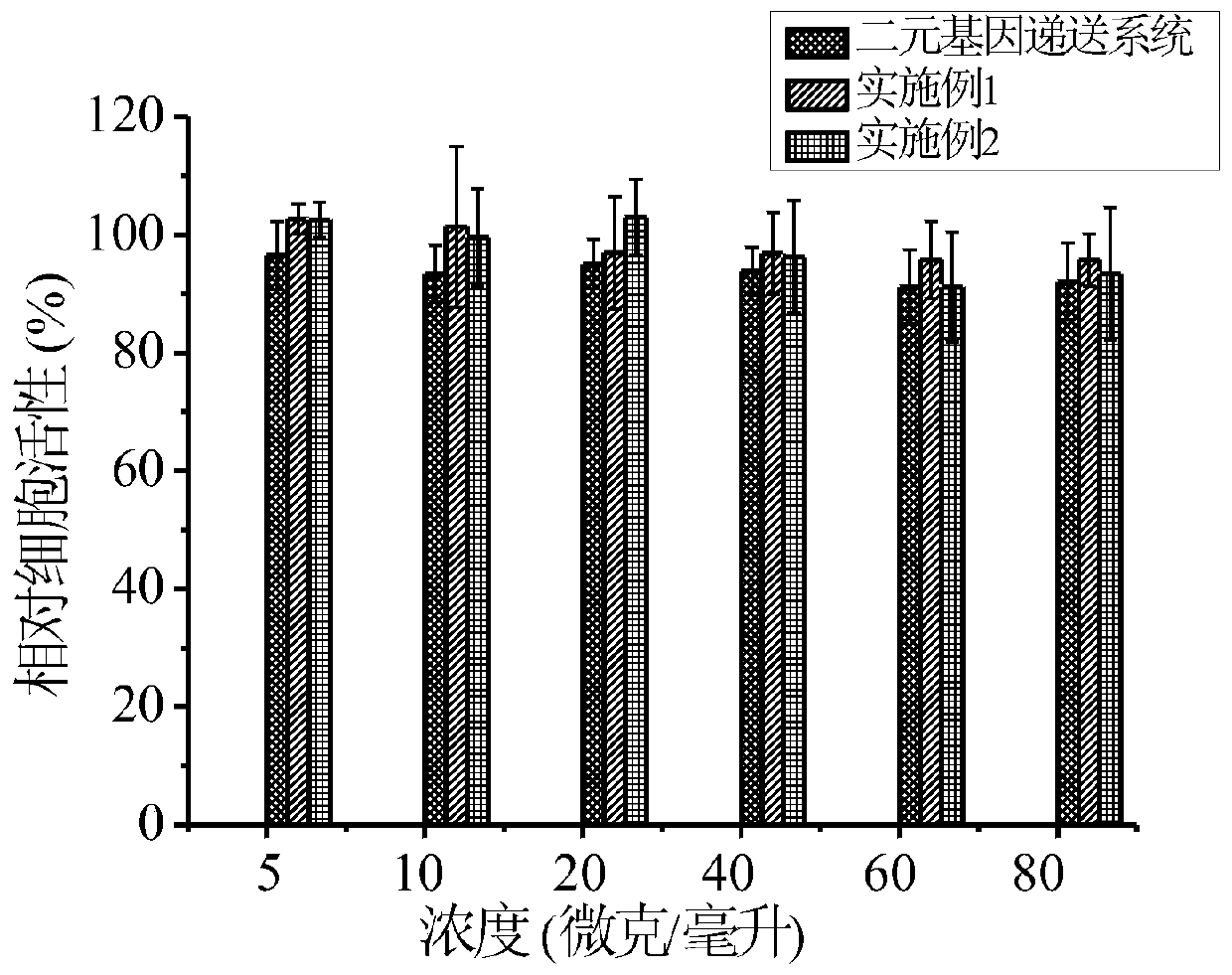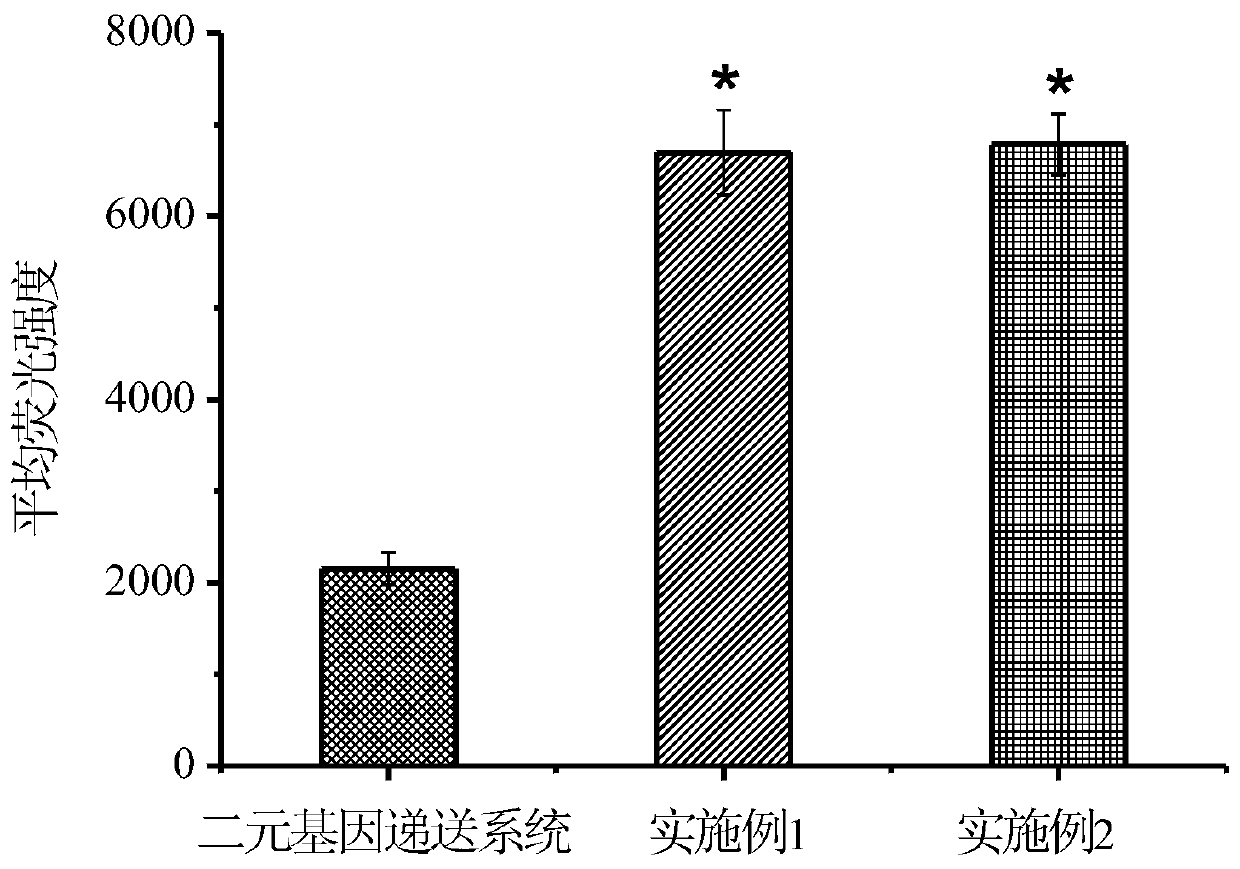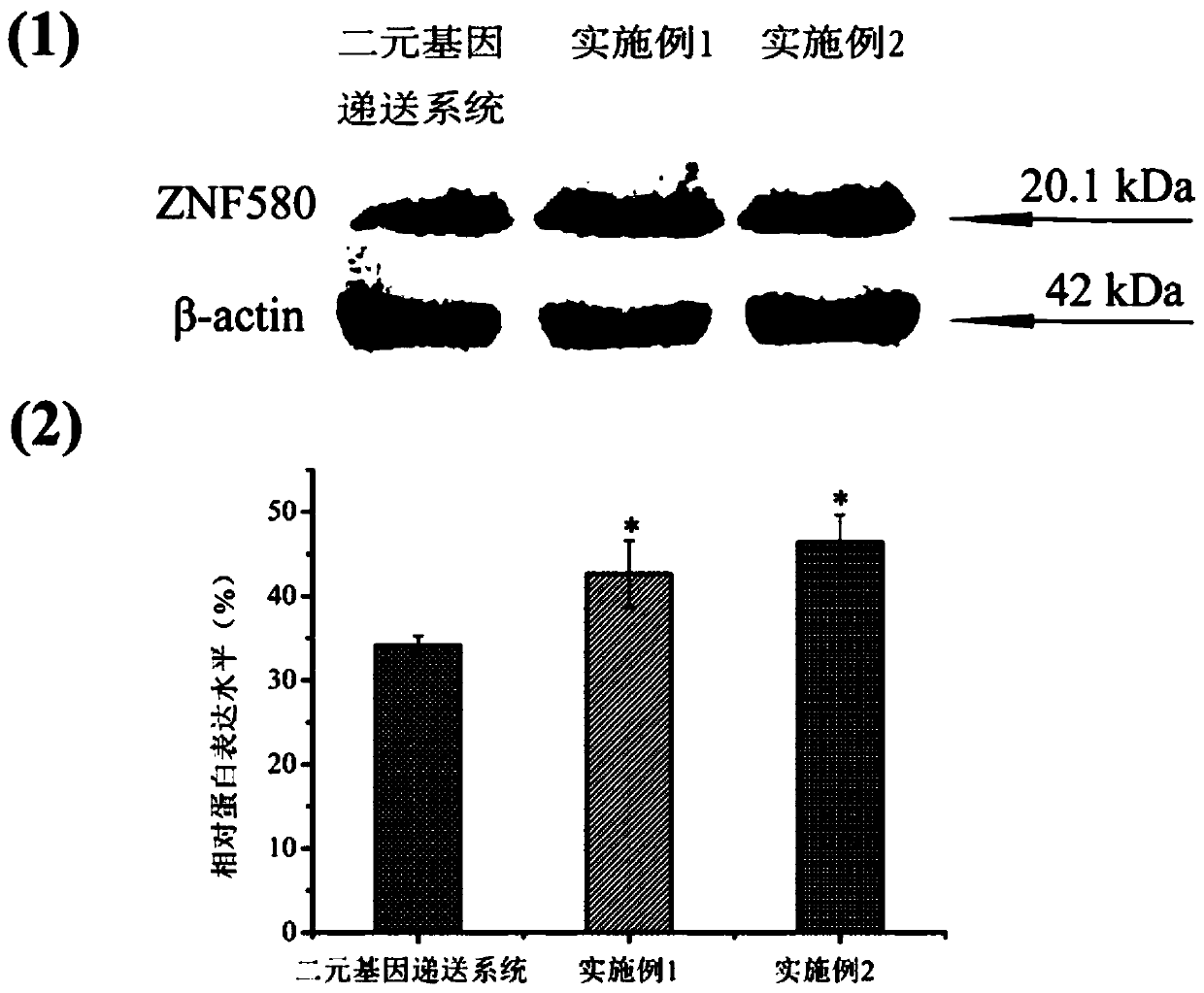A ternary gene delivery system based on penetrating peptide and its application
A technology of gene delivery and penetrating peptide, which is applied in gene therapy, medical preparations with inactive ingredients, genetic material components, etc., can solve the problems of unfavorable multifunctional gene delivery system design and regulation, poor endosomal escape ability, specificity lack of problems, to achieve the effect of efficient nuclear localization ability, good endosomal escape ability, and effective gene delivery
- Summary
- Abstract
- Description
- Claims
- Application Information
AI Technical Summary
Problems solved by technology
Method used
Image
Examples
Embodiment 1
[0044] A method for preparing a three-component gene delivery system based on penetrating peptides, comprising the steps of:
[0045] (1) According to the molar ratio of 1:8, octaamino POSS and NHS-PEG 2000 - OPSS was dissolved in PBS buffer solution with pH = 7.4, and reacted at room temperature for 2 hours;
[0046] (2) Add the REDV-G-TAT-G-NLS-C polypeptide to the solution obtained in step (1), react for 4 hours, use a dialysis bag with a molecular weight cut-off of 3500 for dialysis purification, and freeze-dry to obtain POSS-(PEG- NLS-G-TAT-G-REDV) 8 polymer;
[0047] The molar ratio of octaamino POSS and REDV-G-TAT-G-NLS-C is 1:8;
[0048] (3) Using PBS buffer solution with pH=7.4 as solvent, prepare POSS-(PEG-NLS-G-TAT-G-REDV) with a concentration of 0.5 mg / ml 8 Polymer liquid; by POSS-(PEG-NLS-G-TAT-G-REDV) 8The mass ratio of the polymer to the Cy5-labeled oligonucleotide is 1:0.6, and the Cy5-labeled oligonucleotide aqueous solution with a concentration of 0.05 m...
Embodiment 2
[0053] A method for preparing a three-component gene delivery system based on penetrating peptides, comprising the steps of:
[0054] (1) According to the molar ratio of 1:16, octaamino POSS and NHS-PEG 3000 - OPSS was dissolved in PBS buffer solution with pH = 7.4, and reacted at room temperature for 3 hours;
[0055] (2) Add the REDV-G-TAT-G-NLS-C polypeptide to the solution obtained in step (1), react for 8 hours, use a dialysis bag with a molecular weight cut-off of 3500 for dialysis purification, and freeze-dry to obtain POSS-(PEG- NLS-G-TAT-G-REDV) 8 polymer;
[0056] The molar ratio of octaamino POSS and REDV-G-TAT-G-NLS-C is 1:16;
[0057] (3) Using PBS buffer solution with pH=7.4 as solvent, prepare POSS-(PEG-NLS-G-TAT-G-REDV) with a concentration of 2 mg / ml 8 Polymer liquid; by POSS-(PEG-NLS-G-TAT-G-REDV) 8 The mass ratio of the polymer to the Cy5-labeled oligonucleotide is 1:0.8, and the aqueous solution of the Cy5-labeled oligonucleotide with a concentration o...
Embodiment 3
[0062] Control:
[0063] The binary gene delivery system was obtained from steps (1), (2) and (3) of Example 2.
[0064] The cytotoxicity of the binary gene delivery system and the ternary gene delivery system (ZNF580 gene) prepared in Example 1 and Example 2 was determined by MTT (3-(4,5-dimethylthiazole-2)-2,5-di Phenyl tetrazolium bromide) colorimetric method for evaluation.
[0065] The steps are as follows: Human umbilical vein endothelial cells (EA.hy926 cells) were inoculated into 96-well plates (1×10 4 cells / well) in the cell culture medium, after the cells grew to 90%, the cell culture medium was replaced with a serum-free medium, and the starvation treatment was performed for 12 hours. The medium was then changed to fresh growth medium (10% FBS DMEM). Add different concentrations of binary gene delivery system and ternary gene delivery system solutions into the growth medium, mix well, discard the supernatant after 24 hours, and add 5 mg / ml of MTT (solvent: pH = ...
PUM
 Login to View More
Login to View More Abstract
Description
Claims
Application Information
 Login to View More
Login to View More - R&D
- Intellectual Property
- Life Sciences
- Materials
- Tech Scout
- Unparalleled Data Quality
- Higher Quality Content
- 60% Fewer Hallucinations
Browse by: Latest US Patents, China's latest patents, Technical Efficacy Thesaurus, Application Domain, Technology Topic, Popular Technical Reports.
© 2025 PatSnap. All rights reserved.Legal|Privacy policy|Modern Slavery Act Transparency Statement|Sitemap|About US| Contact US: help@patsnap.com



